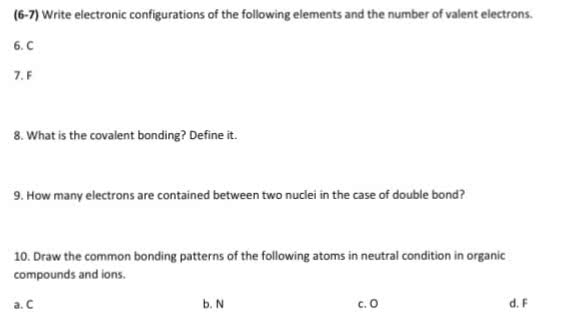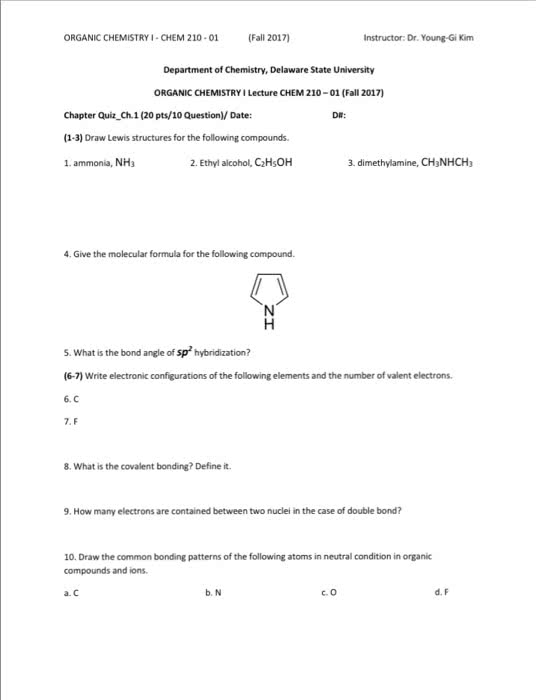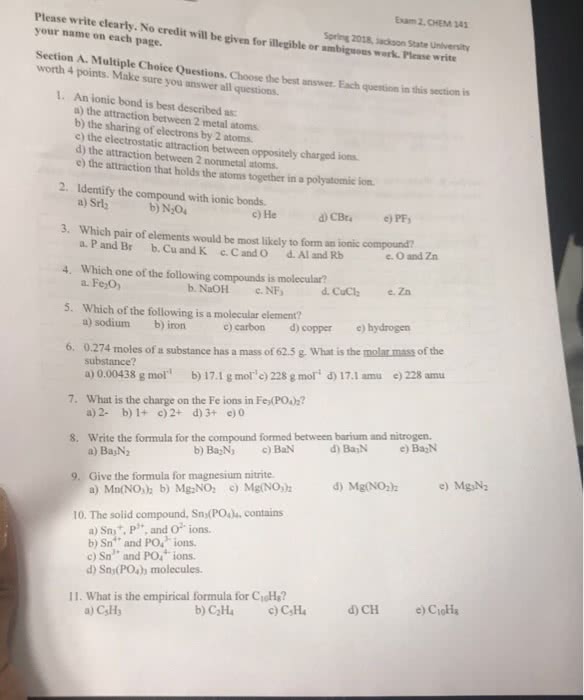CHE 105 Lecture 3: Chapter 3
Document Summary
Elements can combine to make an almost limitless number of compounds. The properties of the compound are totally different from the constituent elements. Ionic bonds results when electrons have been transferred between atoms, resulting in oppositely charged ions that attract each other. Generally, found when metal atoms bond to nonmetal: covalent bonds result when two atoms share some of their electrons. For nonmetals the most common charge is 8 group number. Chemical formula indicates the elements present in the compound and the relative number of atoms or ions of each. Molecular models is the most accurate way to represent a compound. Chemical formulas: there are 2 common ways of expressing formulas, chemical formula: c2h6, empirical formula: ch3. Atomic elements - elements whose particles are single atom: neon, helium, etc, have no subscripts. Molecular elements - elements whose particles are multi-atom molecules: hydrogen h2, oxygen o2, chlorine cl2. Molecular compounds - compounds whose particles are molecules made of only nonmetals.




